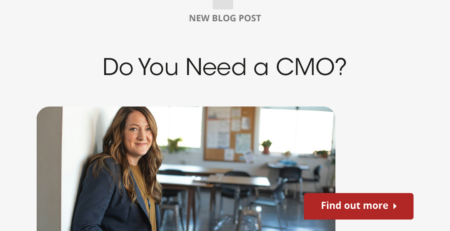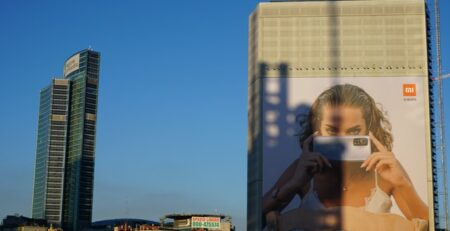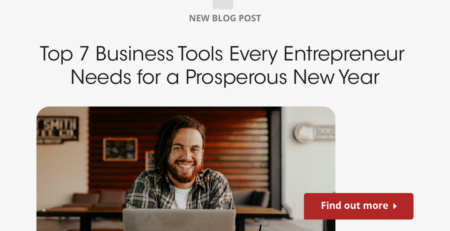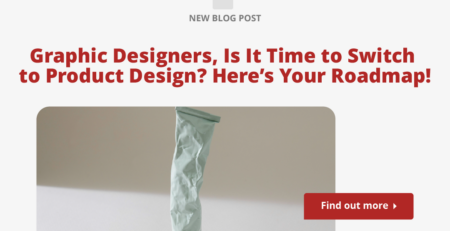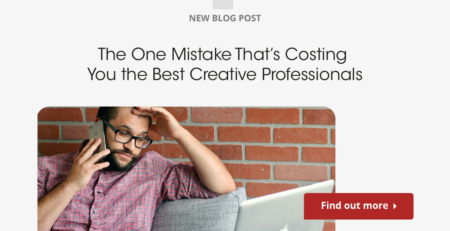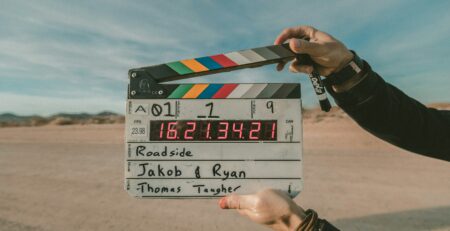Design Your Dream Team: Tips for Recruiting UI/UX Designers
The process of assembling a top-notch UI/UX design team is crucial for any organization aiming to enhance its digital presence. UI/UX designers play a pivotal role in creating engaging and effective user interfaces that can significantly impact user satisfaction and business outcomes. This guide offers comprehensive insights and strategies to help you recruit the best UI/UX talent.
Understanding the importance of UI/UX in today’s digital landscape is the first step. A well-designed user interface does more than just look good; it makes the user’s interaction with your product intuitive and enjoyable. This can lead to increased customer retention, higher conversion rates, and ultimately, a stronger brand.
Before you begin recruiting, it’s essential to define what skills and qualities your ideal UI/UX designer should possess. This varies depending on your project’s specific needs but typically includes a mix of technical skills, such as wireframing, prototyping, and user testing, as well as soft skills like communication, problem-solving, and empathy.
The recruitment process itself can be daunting. Where do you find talented UI/UX designers? How do you evaluate their skills effectively? This guide will walk you through various platforms and strategies for sourcing candidates, from social media and design communities to specialized job boards and staffing agencies like iCreatives.
Once you have a pool of candidates, the next step is the selection process. This involves reviewing portfolios, conducting interviews, and possibly administering design tests. Each step is crucial to ensure that the candidate not only has the requisite skills but also fits well with your company culture.
Interviewing candidates is an art in itself. It’s not just about what they have done in the past but also about gauging their potential for growth and their ability to work collaboratively. Questions should delve into their design process, how they handle feedback, and their experience with user research and analytics.
Another critical aspect is understanding the current market for UI/UX designers. Knowing what constitutes a competitive salary and benefits package is essential for attracting top talent. Resources like iCreatives’ salary guide can provide valuable insights.
Onboarding and retention are just as important as recruitment. Once you’ve hired your UI/UX designers, integrating them into your team and providing opportunities for professional development can help keep them motivated and committed to your organization. This includes regular performance reviews, as discussed in iCreatives’ performance review guide.
Lastly, the landscape of UI/UX design is continually evolving. Keeping up with the latest design trends, technologies, and methodologies is crucial not only for your designers but also for you as a recruiter or team leader. Encouraging continuous learning and adaptation is key to maintaining an innovative and effective design team.
This guide aims to equip you with the knowledge and tools necessary to build a successful UI/UX design team that will contribute significantly to your business’s success. Let’s explore some of the most frequently asked questions about recruiting UI/UX designers.
FAQs about Recruiting UI/UX Designers
What are the essential skills to look for in a UI/UX designer?
When recruiting a UI/UX designer, it’s crucial to look for a blend of technical and soft skills. Technical skills include proficiency in design tools like Sketch, Adobe XD, and Figma, as well as understanding of wireframing, prototyping, and user testing. Soft skills such as communication, teamwork, and empathy are equally important, as they determine how effectively a designer can work within a team and understand user needs.
Experience with responsive design and mobile-first approaches is also critical, given the increasing importance of mobile platforms. Additionally, a good UI/UX designer should have a solid grasp of user-centered design principles and be able to incorporate user feedback into their design process effectively.
It’s also beneficial if the designer has some understanding of front-end development languages such as HTML, CSS, and JavaScript. This knowledge can help bridge the gap between design and development teams and lead to more feasible and innovative design solutions.
Another key skill is the ability to conduct and analyze user research. A designer skilled in this area can bring valuable insights into user behaviors and preferences, which can significantly inform the design process.
Creativity and problem-solving skills are essential for generating innovative design solutions that meet user needs while aligning with business goals. A strong portfolio that demonstrates these skills through various projects is a good indicator of a designer’s capabilities.
Finally, look for a designer who shows a commitment to ongoing learning and professional development. The UI/UX field is dynamic, with new tools, techniques, and best practices continually emerging. A designer who is curious and proactive about learning is likely to keep pace with the industry and contribute to your team’s success.
How do I effectively assess a UI/UX designer’s portfolio?
Assessing a UI/UX designer’s portfolio is a critical step in the recruitment process. A well-rounded portfolio should not only showcase the designer’s final products but also their process and thinking behind each project. Look for portfolios that include case studies detailing the problem, the approach taken, and the solution. This provides insight into the designer’s problem-solving skills and user-centered design approach.
Pay attention to the diversity of projects in the portfolio. A designer who has worked on a wide range of products, including web and mobile applications, demonstrates versatility and the ability to adapt to different design challenges and user needs.
Look for evidence of user research and testing. Portfolios that include user flows, wireframes, and prototypes, as well as descriptions of testing phases and outcomes, indicate a thorough and methodical approach to design.
The aesthetic quality of the designs is also important. Good visual design should align with user experience principles to create interfaces that are not only beautiful but also functional and easy to use.
Consider how well the designer understands and implements UX writing and micro-interactions. These details can greatly enhance the user experience by making interactions feel more intuitive and engaging.
Finally, consider the designer’s ability to articulate their work. A portfolio that clearly and concisely explains each project reflects strong communication skills, which are crucial for collaborating effectively with team members and stakeholders.

What are the best platforms for finding UI/UX designers?
Finding the right platform to recruit UI/UX designers can significantly streamline the hiring process. Professional networks like LinkedIn are invaluable for reaching out to potential candidates directly. LinkedIn allows you to view detailed profiles and portfolios, making it easier to assess a candidate’s experience and skills before making contact.
Design-specific job boards and communities such as Behance and Dribbble are also excellent resources. These platforms are frequented by designers to showcase their work, making them ideal for finding talented candidates who may not be actively searching for a job but are open to opportunities.
Participating in design conferences and workshops can also be a great way to meet potential candidates in person. These events often attract talented designers who are keen on staying updated with the latest trends and best practices in the field.
Staffing agencies that specialize in creative roles, such as iCreatives, can also be a valuable resource. These agencies have a pre-vetted pool of candidates and can help match you with designers who meet your specific requirements.
Finally, don’t underestimate the power of social media platforms like Twitter and Instagram, where many designers share their work and engage with the design community. These platforms can provide additional insights into a designer’s personality and interests, which can be helpful in assessing cultural fit.
How can I conduct an effective UI/UX design interview?
Conducting an effective UI/UX design interview is crucial to ensure that you not only assess the candidate’s technical skills but also their problem-solving abilities and cultural fit. Start by preparing questions that require candidates to discuss their design process in detail. Ask them to walk you through specific projects in their portfolio, focusing on their role, the challenges they faced, and how they overcame them.
Behavioral interview questions can help you understand how the candidate interacts with team members and handles feedback and pressure. Questions like “Can you describe a time when you had to handle a difficult stakeholder?” or “How do you handle negative feedback on your designs?” are telling.
Incorporating practical tasks, such as a design challenge or whiteboard session, can provide insight into the candidate’s thinking and problem-solving process in real-time. Make sure these tasks are relevant to the actual work they will be doing and are respectful of the candidate’s time.
Discussing the tools and technologies the designer is familiar with can also be informative. However, be open to candidates who may not have experience with every tool but demonstrate a willingness and ability to learn.
It’s also important to assess the candidate’s knowledge of industry trends and their ability to stay updated with new tools and methodologies. This can be achieved by asking questions about recent projects they’ve worked on or trends they find exciting.
Finally, ensure that the interview is a two-way conversation. Allow the candidate to ask questions about the team, projects, and company culture. This not only helps them assess whether the role is a good fit for them but also demonstrates your openness and transparency as an employer.
What compensation should I offer to attract top UI/UX talent?
Offering competitive compensation is essential to attract and retain top UI/UX talent. Salary ranges for UI/UX designers can vary widely depending on their experience, the complexity of the role, and the location of your company. Researching industry standards in your area can provide a benchmark. Resources like iCreatives’ salary guide can be particularly helpful.
In addition to a competitive salary, consider offering a comprehensive benefits package that includes health insurance, retirement plans, and paid time off. Benefits such as remote working options and flexible hours can also be very attractive to UI/UX designers, who often value work-life balance.
Performance bonuses and profit-sharing plans can be effective incentives, aligning the designer’s successes with the company’s performance. This not only boosts motivation but also fosters a sense of ownership and loyalty.
Investing in your employees’ professional development can also be a significant draw. Offering a budget for courses, conferences, and workshops shows that you value their growth and are willing to invest in their future.
Finally, consider the work environment and company culture. A collaborative, supportive environment that values creativity and innovation is highly attractive to UI/UX designers. Showcasing your company’s culture through your job postings and interviews can make a big difference in attracting top candidates.
How do I integrate a new UI/UX designer into my existing team?
Integrating a new UI/UX designer into your team requires a thoughtful onboarding process that goes beyond just a review of job duties. Start by ensuring they have a comprehensive understanding of your company’s mission, values, and goals. This helps them align their work with the broader objectives of the organization.
Introduce them to team members individually and in group settings. Encouraging informal meetings and social events can help build rapport and facilitate smoother collaboration among team members.
Assign a mentor or a buddy from the team who can guide the new designer during their initial weeks. This can help them acclimate more quickly and feel supported as they navigate new projects and processes.
Provide clear and detailed information about ongoing and upcoming projects. This includes sharing project briefs, design specifications, and user research. The more context the new designer has, the more effectively they can contribute.
Encourage them to share their ideas and feedback from the beginning. This not only helps them feel valued but can also bring fresh perspectives to your projects.
Regular check-ins during the first few months can help address any concerns or challenges they may face. This is also an opportunity to provide constructive feedback and discuss their progress and development goals.
Finally, ensure that they have access to the tools and resources they need to perform their job effectively. This includes software, hardware, and access to critical company platforms.
How can I ensure the long-term retention of UI/UX designers?
Ensuring the long-term retention of UI/UX designers involves creating a work environment that promotes job satisfaction and professional growth. Regularly reviewing compensation packages and ensuring they remain competitive is crucial. This includes not only salaries but also benefits, bonuses, and other perks.
Providing opportunities for career advancement and professional development is also key. This could mean supporting their participation in workshops, conferences, and courses, as well as offering opportunities for them to lead projects or mentor others.
Fostering a collaborative and inclusive company culture can significantly impact retention. Encourage open communication, recognize and reward contributions, and ensure that all team members feel valued and understood.
Implementing regular feedback mechanisms, such as performance reviews and one-on-one meetings, can help address any issues before they become significant problems. This also helps the designer feel that their opinions are valued and that they have a stake in the company’s future.
Finally, work-life balance is increasingly important to professionals in all fields, including UI/UX design. Offering flexible working conditions, such as remote work options and flexible hours, can help maintain high levels of job satisfaction and loyalty.
Conclusion
Recruiting and retaining top UI/UX talent requires a comprehensive approach that goes beyond just offering a competitive salary. It involves understanding the specific skills and qualities that make a great designer, assessing candidates thoroughly during the recruitment process, and fostering a work environment that promotes their growth and satisfaction.
By following the strategies outlined in this guide, you can build a strong, effective UI/UX team that will play a crucial role in your company’s success. Remember, the investment you make in your design team is an investment in the future of your business, enhancing not only your products but also your overall brand experience.For more insights and resources on building and managing creative teams, visit icreatives.
In today’s competitive market, finding the right creative and marketing expert can be a challenge. But with icreatives, you’re in experienced hands. With 37 years in staffing and a track record of matching more than 10,000 employees to over 1,000 companies worldwide, we know how to connect you with the best. Plus, you only pay if you hire—there’s no risk, only results.
Ready to find your perfect creative or marketing expert? HIRE WITH ICREATIVES today!


